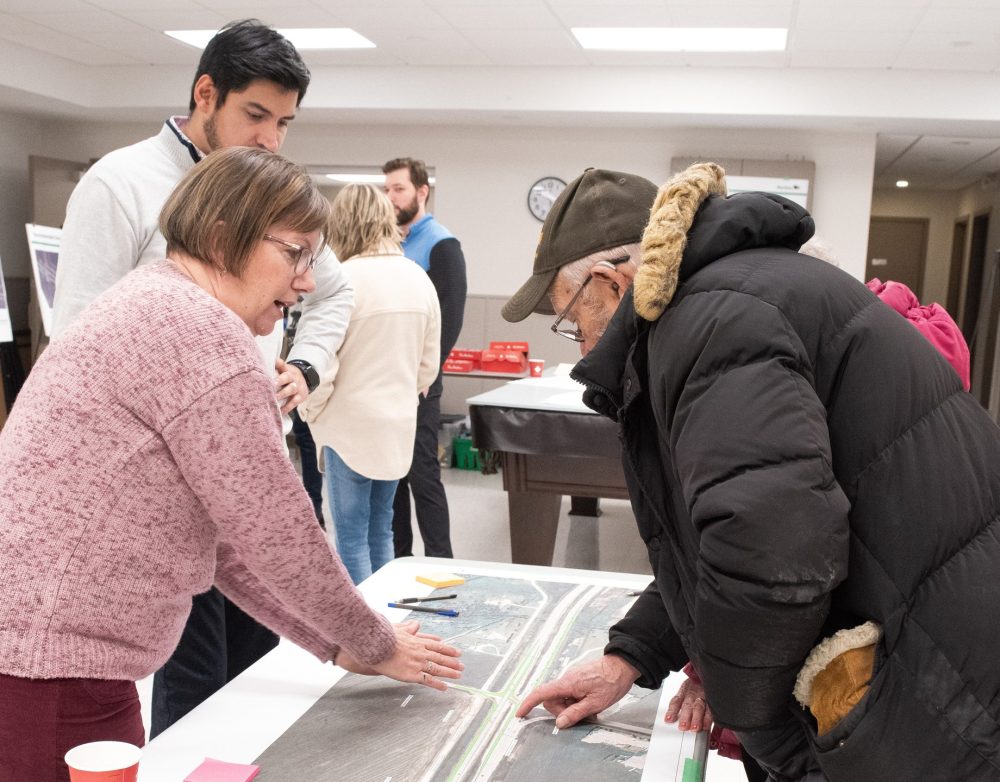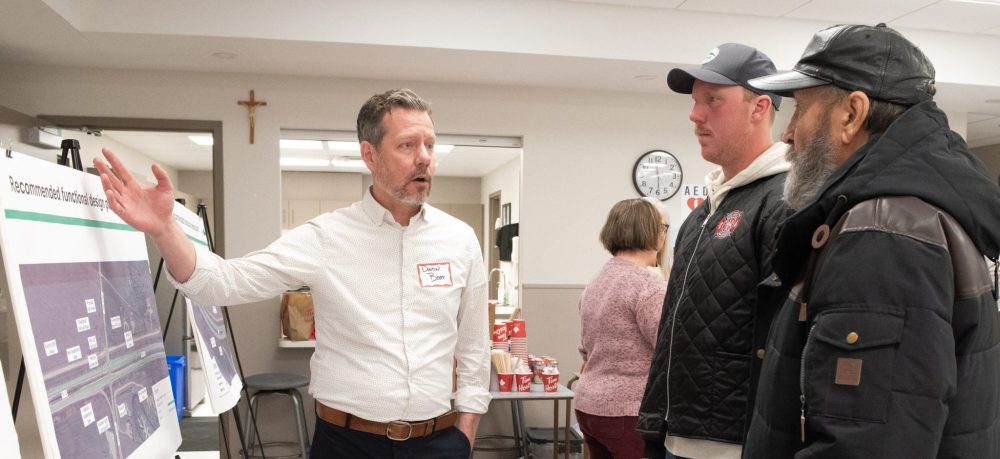Mixed opinions to Ste Anne intersection change
Advertisement
It was a mix of opinions from Ste Anne residents as they went to an open house regarding the intersection of Highway 12 and Provincial Road 210.
Manitoba Transportation and Infrastructure (MTI) held an open house at Club Jovial where diagrams explained the partial closure of the intersection where left hand turns onto Highway 12 from PR 210 would no longer be allowed. Instead cars will have to make right hand turns or drive further up the road and make a U-turn to drive south on Highway 12; this is called a reduced collision or reduced conflict U-turn intersection.
“What that does if drivers make a mistake and they do get into a collision, the collision isn’t catastrophic,” said Dustin Booy, executive director of Highway engineering services with MTI.

“It’s not a 90-degree collision that people have a hard time surviving. It’s usually a side swipe type of collision or a rear end type of collision which are much more survivable on a high-speed highway like on Highway 12.”
Between 2010 and 2019 there have been 63 collisions at that intersection, 38 of which were T-bone collisions, which resulted in three fatalities; 27 collisions with serious injuries; and 33 collisions where there was only damage to the vehicle. All were due to failing to give the right of way.
“Too many people have lost their lives (there). Two people in our (building) got towed at that corner,” said Doreen Leys.
While all agreed there should be come sort of traffic control at that intersection they couldn’t agree on what type of control should be there.
“The feedback has been kind of mixed. You do see some support some interest on how this is going to work but there are individuals that have the perception that it’s going to put them out, they’ll have to drive out of their way that it’ll add to their commute, but from my perspective personally I would much rather that people spend a few more minutes navigating the intersection that putting themselves in harm’s way,” said Booy.
“It’s fairly low cost rather than a roundabout or traffic lights,” said Les Schewe, who lives west of Highway 12 and north of PR 210, about a mile-and-a-half out. “It accommodates people who are going to Steinbach that use that highway the most and we are probably more impacted by what they’re doing than anyone else. We’ll have to go around a little bit but it’s the safest by far it’s the practical solution. You have an overpass a mile and a high away so.”
Schewe believes they should have closed the intersection when they built the Ste Anne overpass.
Robert Gosselin, who sat on Ste Anne council for 14 years, four of which were as mayor, thought a roundabout was the solution or better yet that people should abandon the intersection and use the overpass. He also believes using that intersection is dangerous and likened anyone using it as “culling the herd.”
“You play lawn darts as a kid and there’s a guy who wants to play goalie, well you’re culling the herd. And people who take intersections that are unsafe are just culling the herd.”

“I’m dead against it. I think a set of lights is the only solution,” said Roger Lilley, who lives in the Town of Ste Anne. “You go through Steinbach there’s 14 sets of lights. You go west to Mitchell there’s two sets of lights. This here is going to cost how many hundreds of thousands of dollars?”
Lilley is not the only one who thought lights were the solution. Booy said lights at that intersection would not work because lights are most effective when used in or near an urban setting. The intersection in question has no urban markers that would make people aware to slow down. Should drivers make mistakes the results are a 90-degree collision which can be fatal.
“To have a vehicle stop in the middle of nowhere is counter to what (a driver’s) expectations (are) for driving that corridor, especially (for) something that is large like this, it has a four lane cross section and a lot of vehicles on it. You just came over an interchange, your expectation is not really to have to stop right after going through an interchange location. That is why we try not to deploy those where it’s going to be inconsistent with the surrounding area, including other intersection configurations,” he said.
The plan to change the intersection began several years ago after a number of serious and fatal accidents occurred. MTI started investigating the intersection and determined the option they came up with would provide high mobility on a high-speed roadway while also ensuring safety. Booy said this type of intersection is common in the United States and has recently been implemented outside of Saskatoon.
“They’ve seen incredible safety performance there…After the R-cut was opened and folks had a chance to navigate it, they got more comfortable. But do take a little bit of time just to get familiar with that intersection layout, how to navigate it and it’ll make your commute that much safer every day.”
It’ll cost MTI about $4 million to implement the intersection design with construction set to begin next summer.
